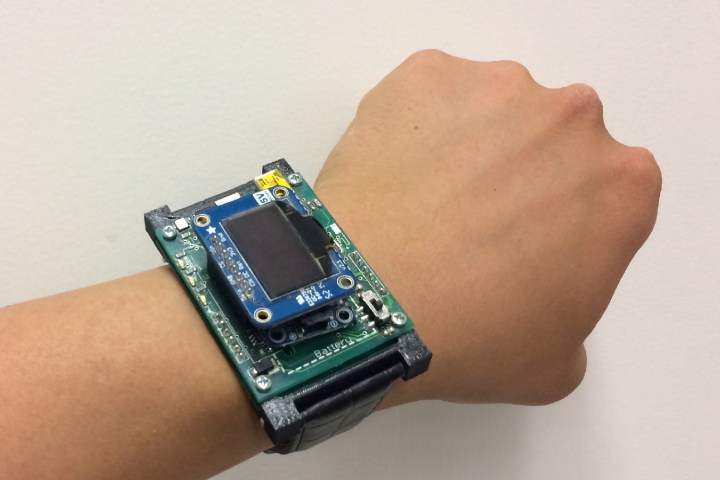
“The e-Mosquito is an unimposing, autonomous wearable device that can bite through the skin of a diabetic patient, [take a] capillary blood sample, analyze it for glucose, and report the result wirelessly to a smartphone, [the] internet, Health Watch, or the like,” Martin Mintchev, professor of electrical and computer engineering at Canada’s University of Calgary, told Digital Trends.
The project started way back in 2007 with a prototype that was roughly the size of a deck of cards. It’s now evolved into a smaller, more watch-like device, boasting a shape memory alloy (SMA)-based actuator. This has allowed the team to shrink the device, while at the same time remaining able to produce a greater penetrative force into the skin — although we’re assured it doesn’t hurt any more than an actual mosquito nip.
The new device packs a battery, LED display, actuator, and other components, while a disposable cartridge carries a needle and test strip. It can be programmed to take a sample at prearranged times, meaning that the wearer doesn’t even have to stop and think about pricking their finger for a blood sample.
There’s still plenty of work to be done, particularly if the e-Mosquito can eventually expand its use-cases to include other tests, such as genetic testing or cancer screening, as Mintchev hopes it will. For now, though, the plan is to continue working on this prototype in a way that will eventually make it saleable.
“At the moment we are working on the glucose-sensing mechanism integration, with the hope to commercialize the device as soon as possible,” Mintchev said.
Between this work, Apple’s (possible) research on diabetes-managing devices, and other tech initiatives like the University Hospital of Montpellier, France’s artificial pancreas project, things could be looking up for diabetes sufferers.
Editors' Recommendations
- How taking your blood pressure is about to be as easy as taking your heart rate
- Riot Games requires Valorant e-sports organizers to turn off blood
- Specialized’s new road ebike will cure your range anxiety for good


